After Rosalind P. Walter's work at a Connecticut factory during World War II inspired "Rosie the Riveter," she went on to become a hero in her own right.

WNETRosalind P. Walter inspired the 1942 song “Rosie the Riveter,” which later morphed into the popular women’s empowerment icon starting in the World War II era.
One of the most iconic images in American history, the “We Can Do It!” poster widely associated with the inspiring character of “Rosie the Riveter” still remains a key symbol of female empowerment more than 75 years after it was created.
To this day, it is one of the most requested images in all of the U.S. National Archives, which states that it “encapsulates a turning point in the evolution of women’s roles and rights in American culture.”
But although Rosie the Riveter is iconic even today, the real woman behind this character remains lesser-known, despite leading a heroic life in her own right.
Before passing away at age 95 on March 4, 2020, Rosalind P. Walter was a prominent philanthropist and supporter of public television who worked for decades to provide educational opportunities for disadvantaged children. But before that, she was one of the millions of American women who joined the workforce and helped power the nation during World War II.
And that’s where Rosalind P. Walter inspired the Rosie the Riveter character and secured her place in history.
Rosalind P. Walter’s Life Before She Inspired An Icon
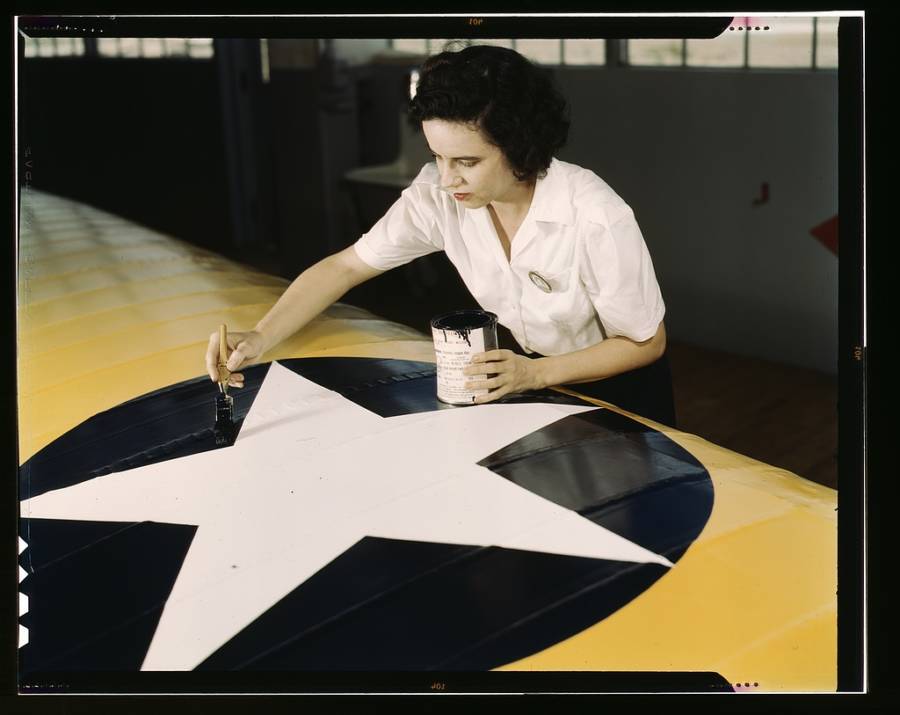
Howard R. Hollem/Library of CongressOnce World War II broke out, women made up for the labor shortfall created by men serving in the military.
Before she inspired Rosie the Riveter, Rosalind P. Walter was born Rosalind Palmer on June 24, 1924, in Brooklyn, New York. The daughter of a literature professor and a pharmaceutical executive, she grew up on her family’s estate in Fairfield, Connecticut.
Rosalind P. Walter — or Roz, as her friends called her — attended the prestigious Ethel Walker School, one of the first college preparatory boarding schools for upper-class women.
After graduating, she joined the approximately 5 million American women who bolstered the country’s labor force as men joined the military to fight in World War II.
Quickly, women filled in the wartime labor gap, taking over riveting and manufacturing jobs typically reserved for men at the time. Rosalind P. Walter was recruited to drive rivets into fighter planes at a local plant in Stratford, not far from her family’s Fairfield home.
The Birth Of “Rosie The Riveter”
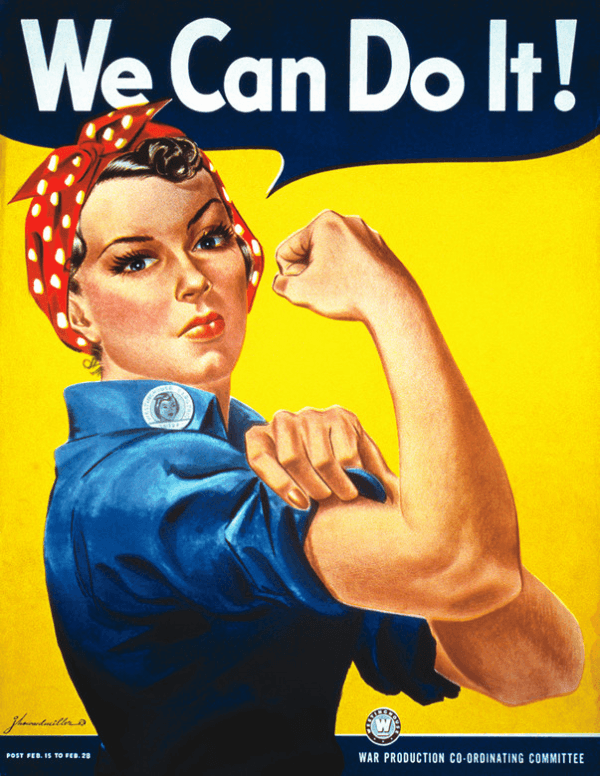
U.S. Dept. Of DefenseThe famed poster later associated with “Rosie the Riveter,” created by J. Howard Miller for Westinghouse Electric in 1943.
Largely because she came from a prominent family, the story of Rosalind P. Walter’s manual labor at the Vought Aircraft Company factory caught the attention of syndicated newspaper columnist Igor Cassini in 1942.
Cassini painted a compelling picture: a young educated woman from a wealthy family who’d taken up her civic duty and endured long hours of laborious work to help her country during the war. The portrait was decidedly emblematic of the dedication and sacrifice shown by women workers across the country during the war.
But then, the column unexpectedly inspired songwriters Redd Evans and John Jacob Loeb to create a song called “Rosie the Riveter” (with “Rosalind” becoming “Rosie”) in honor of the working women fueling America at the time. The song, popularized by a band called the Four Vagabonds as well as bandleader Kay Kyser, included inspiring lyrics like:
All the day long whether rain or shine
she’s a part of the assembly line
She’s making history,
working for victory —
Rosie, brrrrr, the Riveter
Keeps a sharp lookout for sabotage
Sitting up there on the fuselage
That little frail can do, more than a male can do —
Rosie, brrrrr, the Riveter.
The lyrical imagery of women in dusty overalls with tightly-knotted hair doing work that had previously been reserved for men soon transcended the song and the character of Rosie the Riveter filtered into the wider American consciousness.
This character inspired everything from posters to magazine covers to a Hollywood film. One poster in particular — a 1943 image known as “We Can Do It!” that was created to boost worker morale at Westinghouse Electric in 1943 — became especially popular and ensured that Rosie the Riveter would be an icon for decades.
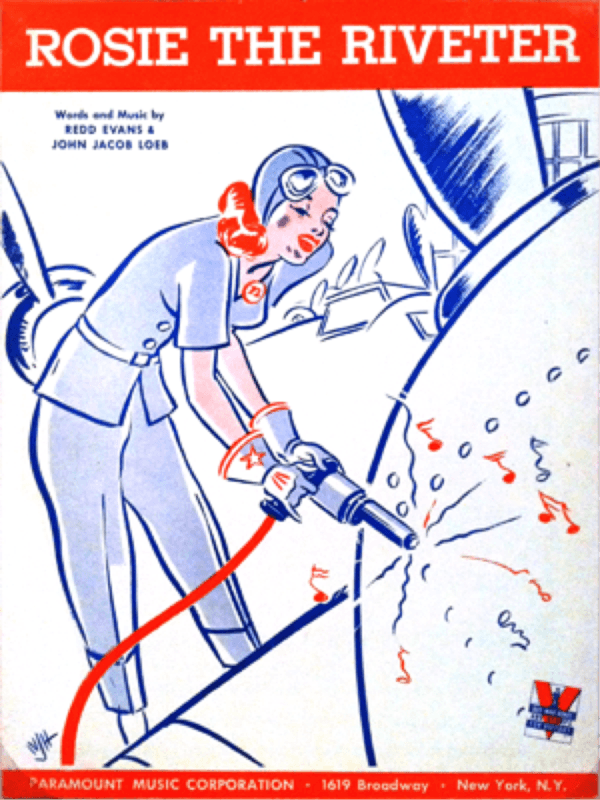
WikimediaThe original sheet music for the song “Rosie the Riveter.”
But Rosalind P. Walter’s role in this story received relatively little attention and she went on to lead a heroic life of her own.
From Wartime Service To Philanthropy
After the war, Rosalind P. Walter moved on to work as a nurse’s aide at New York City’s Bellevue Hospital and married a Naval Reserve lieutenant named Henry S. Thompson. The couple had one son before divorcing in the 1950s.
In 1956, Walter married to Henry Glendon Walter Jr., who was president then later chairman and chief executive of International Flavors and Fragrances, which provided artificial scents and tastes for tens of thousands of commercial products.
Meanwhile, the wealth that Rosalind P. Walter inherited from her father — and later, her second husband — allowed her to become an eminent philanthropist. A supporter of public education, Walter and her husband gave generously to public institutions such as the American Museum of Natural History and the the Pierpont Morgan Library.
In 1978, Walter began making large donations to New York’s WNET public television station. As the station’s largest single donor, she ultimately helped fund 67 shows that continued to air thanks in part to Walter’s financial support.
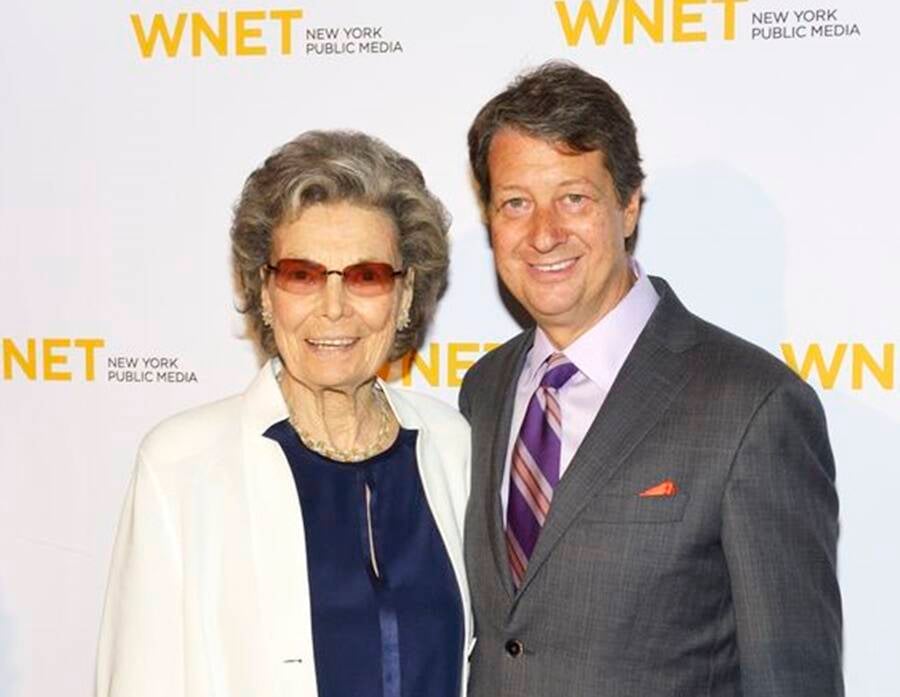
Getty ImagesRosalind P. Walter at the WNET Annual Gala Salute in New York City in 2015.
According to Allison Fox, the senior director of principal gifts at WNET, Rosalind P. Walter’s unfulfilled ambitions to go to college in order to instead join the war effort led to her philanthropy later in life.
“She cared deeply about the public being informed and felt that public television and media is the best way to accomplish this,” Fox said.
Rosalind P. Walter remained the network’s largest individual supporter until her death in New York City on March 4, 2020 at 95 years old.
Why There’s More Than One Rosie
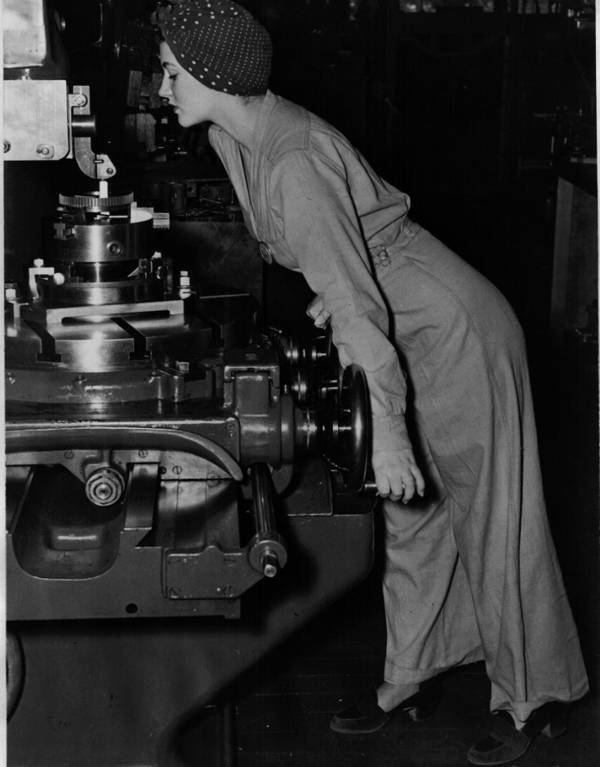
Wikimedia CommonsThe photograph of wartime worker Naomi Parker that is widely believed to have inspired the “Rosie the Riveter” poster.
Although Rosalind P. Walter is known as the inspiration behind the Four Vagabonds’ “Rosie the Riveter” song, which was the first time the character was named as such, the history of the larger character is complicated.
Indeed, in addition to Walter, many other women have been recognized as the inspiration behind the icon.
For starters, at least one other woman (an aircraft worker from San Diego named Rosina Bonavita) has been offered as a possible inspiration for the song, though Walter is widely recognized as the one behind the tune.
Meanwhile, the most popular depiction of the iconic character, the 1943 “We Can Do It!” poster, also has an uncertain muse. Though the poster was created merely as an internal morale-booster for employees of Westinghouse Electric and was displayed for just a few weeks before being forgotten, it later became an enduring symbol for women’s rights. And once it became iconic, a number of women were floated as the possible inspiration behind it.
While Geraldine Hoff Doyle of Michigan claimed that a photo of her at work in a factory during the war was what inspired the poster and that claim was widely repeated in the media, it has been all but debunked. Instead, a photo of another wartime factory worker from California named Naomi Parker Fraley is more widely accepted as the inspiration for the poster.
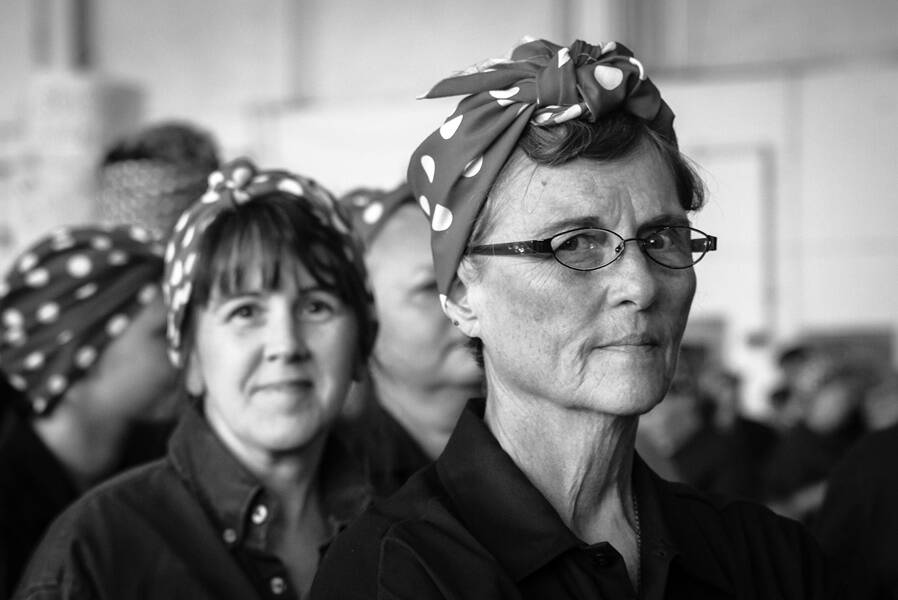
hashtagstreetphotography/FlickrDecades after the character was born, “Rosie the Riveter” has remained a symbol of women’s empowerment to this day.
Despite the many women held up as the real Rosie the Riveter, Rosalind P. Walter remains the one who demonstrably inspired the character’s original incarnation. Without her, we wouldn’t know the name Rosie the Riveter, or feel its power in American society and culture to this day.
Now that you’ve read up on Rosalind P. Walter, the original “Rosie the Riveter,” meet the Night Witches, the all-female World War II squadron that terrified the Nazis. Then, take a look at 50 stunning photographs celebrating women’s history.





